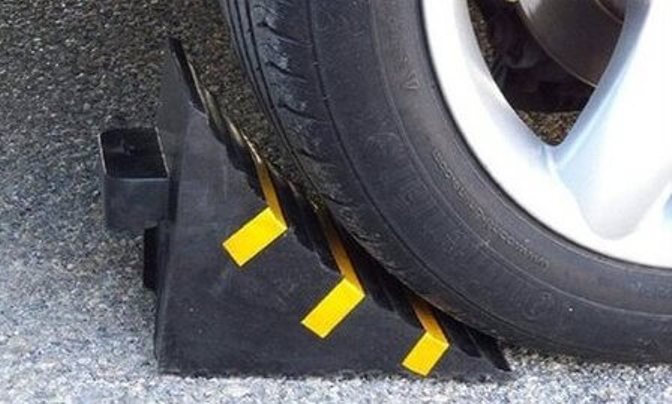What Are Wheel Chocks?
Wheel chocks are relatively simple wedges that are put tightly against the wheels of a vehicle to prevent unexpected movement. Its primary function is to keep the automobile from rolling. Some people believe that a wheel chock isn't necessary. You may not know how important it is until a situation happens, such as when you're at work and your car suddenly begins rolling away! Of course, this is something you don't want to happen.
Why Do You Need A Pair Of Wheel Chocks?
Even if the engine is turned off and the brakes are on, a car parked on an incline has a propensity to roll. Wheel chocks may come in handy at this point. Wheel chocks are a comparatively low-cost investment in your and others' safety. Because unintended movement is a frightening and hazardous circumstance, investing in high-quality wheel chocks is a smart preventive measure to avoid injury and property damage.
Wheel chocks are available in a range of forms and sizes, as well as a variety of materials. The beauty of chocks is that they are low-tech and simple to operate. All you need to know is what's ideal for your vehicle and what will meet your needs. Consider them just like any other car accessory such as weather strips, wheel arch flares, rubber mats or rubber sheets.
Guide To Select the Right Wheel Chocks:
- Size: Because tyres are constructed in relation to the car's size and weight, wheel chocks must match the size of the tyres you're using them on. If you buy a wheel chock that is too tiny, it may not accomplish its function properly.
- Weight: A lightweight chock may be good for a tiny car, but on a steeper incline, it may not be suitable for a full-size SUV. The chock's weight prevents it from being pushed out of the path by the car.
- Vehicle Weight: Make sure you acquire wheel chocks that can support your vehicle's weight. Most chock makers state how much weight their chocks can support, so be sure you know how much your car can take before you buy.
- Vehicle Tyre: The type of vehicle and tyre you intend to chock influence the chock you select. Heavy, off-road tyres, such as those seen on earthmovers and grading equipment, require a different chock than those found on your family automobile. It's wise to look at the package to see what sort of car the chocks you're buying are made to fit.
- Material: Urethane, rubber, aluminium, and other materials are used to make chocks. Each variety has its own set of benefits and drawbacks. Teeth on the bottom of aluminium chocks are commonly used to bite into the surface underneath and offer stability. The friction formed between the non-slip substance and the ground provides stability with synthetic or rubber wheel chocks.
- Design: Wheel chocks may be found in a variety of shapes and sizes. Some chocks have a curve that follows the curvature of the tyre. Others are simple pyramids or have a lip at the bottom to wedge firmly between the narrow areas where the tyre's rubber exits the road, but all-wheel chocks have some sort of tread on their face to create friction between the tyre and the chock.
- Packaging: Examine the number of wheel chocks included in the box. The majority of them should be sold in pairs (you generally want to chock two tires). Some, however, are available as singles. In addition, some chocks are intended to nest inside one another for easier storage (known as nesting). Others are unable to be nested.
So now that you know what to look for when buying wheel chocks, getting a set is a piece of cake! It's a must-have for a piece of simple equipment that can save your life. Just remember to use wheel chocks on a firm, solid and level surface and to utilise the parking brake whenever possible.







Follow us